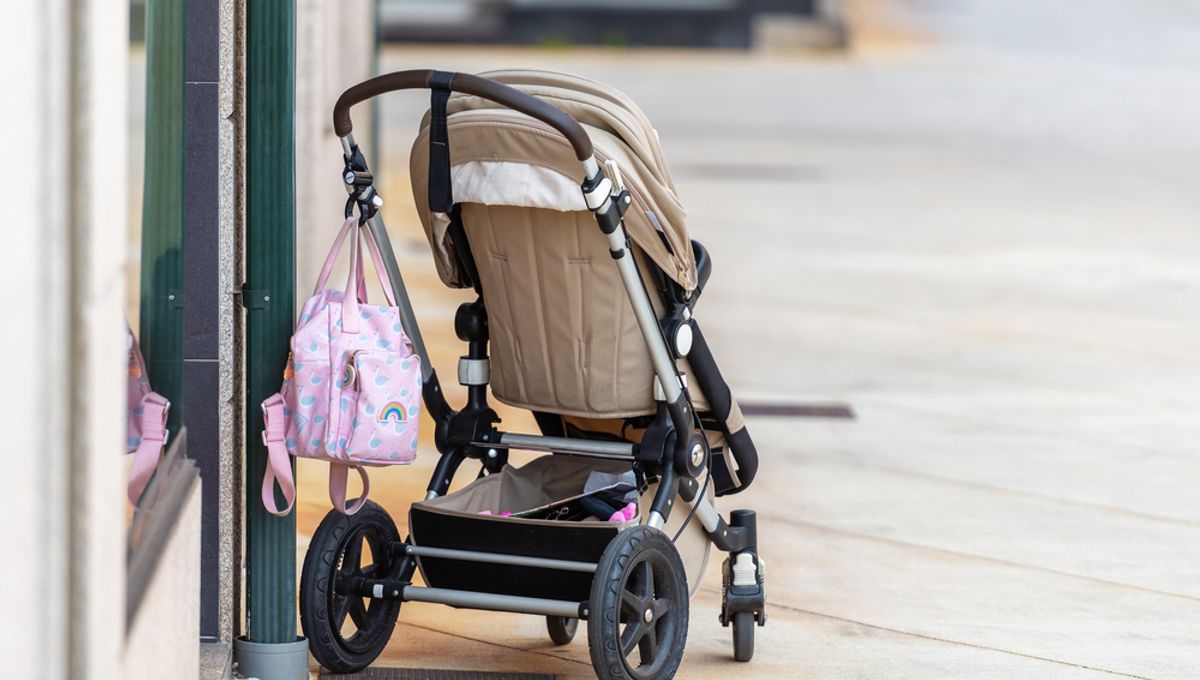
In Nordic countries, there’s a norm of letting babies take a nap alone outside in their pushchairs. Wander down a street in Denmark, Sweden, Norway, or Finland and there’s a chance you’ll see strollers and prams quietly sitting by themselves with a sleeping baby inside, even on a chilly winter day.
It’s perfectly acceptable for parents to slip into a cafe for a coffee and leave their baby outside with no qualms. In fact, it’s not unusual to see a mini car park of pushchairs lined up outside buildings.
The practice may seem strange to foreign eyes, but it’s a widely accepted tradition among Nordic parents and even encouraged by midwives. All in all, the practice of letting babies nap outside is perceived to boost kids’ health and serves as a way to express age-old cultural traditions.
A TikTok (video below) explaining the practice in Denmark recently went viral, attracting over 2 million likes and tens of thousands of comments. Many commented how it was also a norm in other parts of the world, such as other Nordic countries, Russia, and parts of Eastern Europe.
For the most part, people were curious and accepting of the napping ritual, with most commenters saying how they wished they could live in a country that’s so safe.
“Imagine feeling this safe in a country” one person commented.
“I think this is beautiful! I love the idea of living in a place where this is the norm,” said another.
“As an American, I cannot even fathom a society this safe… which is sad,” wrote one user.
This relatively high sense of security in Nordic countries certainly may play a role in how this practice came about.
Denmark, Finland, Iceland, and other Nordic countries frequently rank at the top as some of the world’s happiest countries. Their climates may be a bit gloomy at times, but these countries are graced by high levels of social cohesion, good healthcare systems, and low crime. Leaving a baby out on the street, therefore, is considered relatively safe and low-risk.
It’s less clear why parents do this, but many believe it holds some health and well-being benefits for their whippersnappers.
A 2008 study looked at this particular childcare practice in Finland to gauge people’s opinions about their children sleeping outdoors during the harsh Finnish winter. They found that it usually began when the child was 2 weeks old and was generally carried out once a day. Parents reported happily letting their babies sleep outside in temperatures as cold as -15°C (5°F), keeping them comfortable by wrapping them in woolen clothing and outerwear.
As for the benefits of this practice, it’s hard to say, but parents reported that their babies tended to sleep for longer when placed outside. Up to 66 percent of Finnish parents said their babies appeared more active after naps taken outdoors compared with naps taken indoors, while 88 percent reported that the child “clearly enjoyed” sleeping outdoors.
Almost all of the parents surveyed said they believe the feel-good benefits came from exposing the young’uns to fresh cool air. There is a belief in many parts of the world that being exposed to the frosty wilderness can toughen children’s immune systems, although that’s never been proven by a robust scientific study. Similarly, it is true that playing and being active in natural environments can boost a child’s immune system significantly.
Another study in 2013 looked at the cultural meaning behind the practice, once again in Finland, concluding that it boosted the families’ well-being and perhaps played a role in adapting people to the freezing winters of Northern Europe.
It was also seen as a way that “cultural knowledge was built.” In other words, it’s a tradition that’s deeply ingrained into the culture and people simply like to continue following it, regardless of whether it fulfills a practical need that can be quantified.
Source Link: Why Babies Take A Nap Outside Alone In Nordic Countries